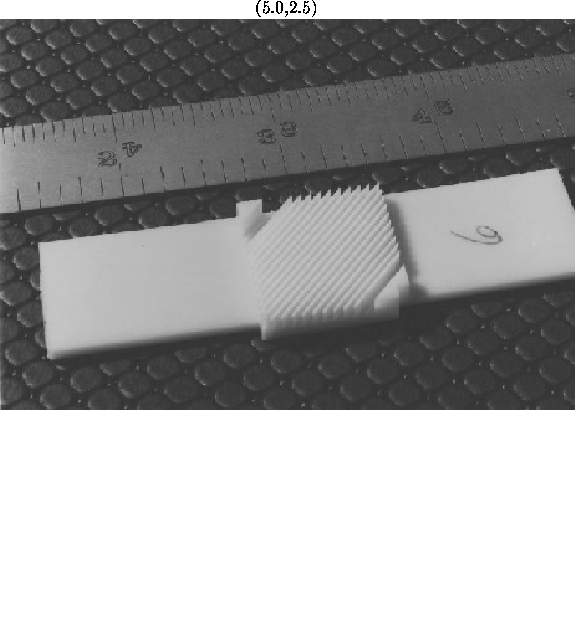



Next: Monitoring Backgrounds at DØ
Up: Roman Pot Insertion Procedure
Previous: Roman Pot Location
With no Roman pots, the
accelerator-induced background is expected to be at most a few percent
of the background from  interactions.
The DØ sub-detector most sensitive to accelerator related background
is the forward muon spectrometer.
Studies have been performed to quantify the
increase in background due to the Roman pots
compared to the baseline case
with no pots.
interactions.
The DØ sub-detector most sensitive to accelerator related background
is the forward muon spectrometer.
Studies have been performed to quantify the
increase in background due to the Roman pots
compared to the baseline case
with no pots.
A contribution to background rates of beam halo interactions with the pots
is calculated
assuming an intensity of  protons per bunch and
protons per bunch and  anti-protons per bunch and a luminosity of
anti-protons per bunch and a luminosity of  cm
cm (as in the halo studies).
The halo
protons scattered by the pots and secondary particles generated in inelastic
nuclear interactions with the pots and accelerator
components are then passed through detailed simulations with the MARS code.
These simulations combine the magnetic fields and
the pot, separator, quadrupole, dipole, tunnel,
shielding, and DØ forward muon spectrometer geometry,
yielding a three dimensional distribution of particles entering the
DØ sub-detectors.
(as in the halo studies).
The halo
protons scattered by the pots and secondary particles generated in inelastic
nuclear interactions with the pots and accelerator
components are then passed through detailed simulations with the MARS code.
These simulations combine the magnetic fields and
the pot, separator, quadrupole, dipole, tunnel,
shielding, and DØ forward muon spectrometer geometry,
yielding a three dimensional distribution of particles entering the
DØ sub-detectors. The ratio of the number of hits from accelerator background
in the muon chambers
(located at 6, 8, and 10 meters
from the interaction point) with and without Roman pots is then determined.
This ratio is about 4.5 for 8
The ratio of the number of hits from accelerator background
in the muon chambers
(located at 6, 8, and 10 meters
from the interaction point) with and without Roman pots is then determined.
This ratio is about 4.5 for 8 pot positions and 1.5
for 9
pot positions and 1.5
for 9 pot positions, implying a total increase in background
rates of at most 15% for 8
pot positions, implying a total increase in background
rates of at most 15% for 8 and a few percent for 9
and a few percent for 9 .
The effect of a small increase in the background rates to the muon system
should be minor. The pixel trigger counters for the muon system
will have 1 nsec time resolution and
a 20 nsec gate, and thus will be able to distinguish between hits from
halo and from
.
The effect of a small increase in the background rates to the muon system
should be minor. The pixel trigger counters for the muon system
will have 1 nsec time resolution and
a 20 nsec gate, and thus will be able to distinguish between hits from
halo and from  interactions.
interactions.
Although previous Roman pot detectors have run with no discernible
impact on nearby central detectors, and the overall effect of the
increased background should be minor, one could consider adding
extra shielding in the tunnel to be conservative.
The background rates can be reduced by a factor of three by
simply adding 2 feet of concrete or
sandbag shielding to the 6 foot wall located at the tunnel-hall interface
10 meters from the interaction region.
The conclusion from the background studies is consistent with that of the
halo studies: the pots can likely be positioned between 8 and 9 .
The actual running position will clearly have to be determined experimentally.
.
The actual running position will clearly have to be determined experimentally.




Next: Monitoring Backgrounds at DØ
Up: Roman Pot Insertion Procedure
Previous: Roman Pot Location
Gilvan Alves
Tue Mar 17 12:50:26 GRNLNDST 1998
 interactions.
The DØ sub-detector most sensitive to accelerator related background
is the forward muon spectrometer.
Studies have been performed to quantify the
increase in background due to the Roman pots
compared to the baseline case
with no pots.
interactions.
The DØ sub-detector most sensitive to accelerator related background
is the forward muon spectrometer.
Studies have been performed to quantify the
increase in background due to the Roman pots
compared to the baseline case
with no pots.
